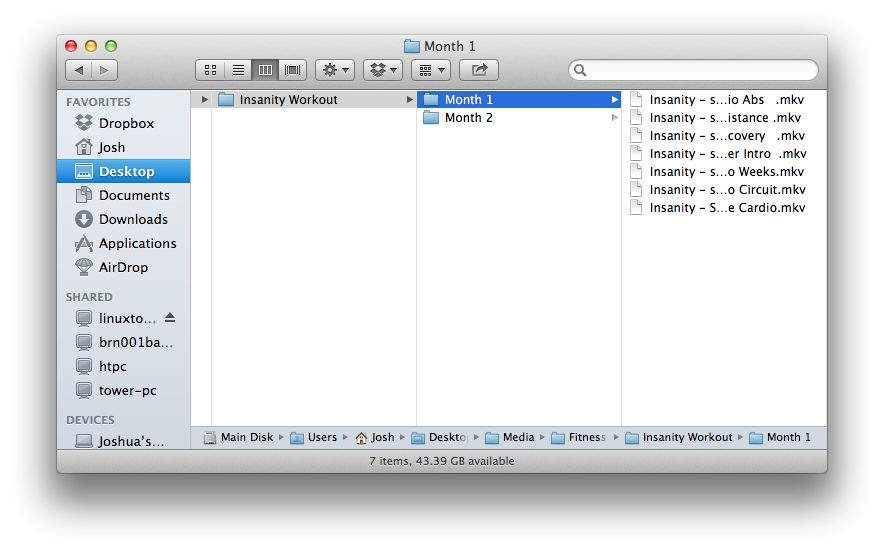Finding My Home Mac OS
The Finder is the first thing that you see when your Mac finishes starting up. It opens automatically and stays open as you use other apps. It includes the Finder menu bar at the top of the screen and the desktop below that. It uses windows and icons to show you the contents of your Mac, iCloud Drive, and other storage devices. It's called the Finder because it helps you to find and organize your files.
Change how your files are displayed
To find your internal IP address on a newer Mac, first click on the Apple icon on the upper-left corner of the screen. From here, click on “System Preferences” in the drop down menu that appears. Apr 11, 2019 How to find the Home folder easily. Fortunately, there is a quicker way to access your Home folder — with the help of the Space Lens tool in CleanMyMac X. In just a few clicks, you can build your storage map and see all the files folders on your Mac. Download and install CleanMyMac X. Choose Space Lens. Your Mac's hosts file is a small but important text document that has the ability to map hostnames to specified IP addresses. While the modern Internet uses a variety of public and private DNS.
To change how files are displayed in Finder windows, use the View menu in the menu bar, or the row of buttons at the top of the Finder window. You can view files as icons , in a list , in columns , or in a gallery . And for each view, the View menu provides options to change how items are sorted and arranged, such as by kind, date, or size. Learn more about customizing views.
Gallery View, showing the sidebar on the left and the Preview pane on the right.

When you view files in a gallery, you can browse your files visually using large previews, so it's easy to identify images, videos, and all kinds of documents. Gallery View even lets you play videos and scroll through multipage documents. Earlier versions of macOS have a similar but less powerful gallery view called Cover Flow .
The sidebar in Finder windows contains shortcuts to AirDrop, commonly used folders, iCloud Drive, devices such your hard drives, and more. Like items in the Dock, items in the sidebar open with just one click.
To change the items in your sidebar, choose Finder > Preferences from the Finder menu bar, then click Sidebar at the top of the preferences window. You can also drag files into or out of the sidebar. Learn more about customizing the sidebar.
Search for files
To search with Spotlight, click the magnifying glass in the menu bar, or press Command–Space bar. Spotlight is similar to Quick Search on iPhone or iPad. Learn more about Spotlight.
Find My Os Version
To search from a Finder window, use the search field in the corner of the window:
/article-new/2019/04/how-to-reveal-the-library-folder-on-macos-6-800x500.jpg?lossy)
When you select a search result, its location appears at the bottom of the window. To get to this view from Spotlight, choose “Search in Finder” or “Show all in Finder” from the bottom of the Spotlight search results.
In both Spotlight and Finder, you can use advanced searches to narrow your search results. You can also use tags to organize and find files.
Delete files
To move a file to the Trash, drag the file to the Trash in the Dock. Or select one or more files and choose File > Move To Trash (Command-Delete).
To remove a file from the Trash, click the Trash to open it, then drag the file out of the Trash. Or select the file and choose File > Put Back.
To delete the files in the Trash, choose File > Empty Trash. The storage space used by those files then becomes available for other files. In macOS Sierra, you can set up your Mac to empty the trash automatically.
View saved passwords in Safari
- Open Safari.
- From the Safari menu, choose Preferences, then click Passwords.
- Sign in with Touch ID, or enter your user account password. You can also authenticate your password with your Apple Watch running watchOS 6 or later.
- To see a password, select a website.
- To update a password, select a website, click Details, update the password, then click Done.
- To delete a saved password, select a website, then click Remove.
You can also use Siri to view your passwords by saying something like 'Hey Siri, show my passwords.'
Finding My Home Mac Os X
Save your passwords across your devices
Autofill your Safari user names and passwords, credit cards, Wi-Fi passwords, and more on any device you approve. iCloud Keychain keeps your passwords and other secure information updated across your iPhone, iPad, iPod touch, or Mac.
Learn how to set up iCloud Keychain.
Learn which countries and regions support iCloud Keychain.
Use AutoFill to store credit card information
AutoFill automatically enters things like your previously saved credit card details, contact information from the Contacts app, and more.
Learn how to set up and use AutoFill in Safari on your Mac.